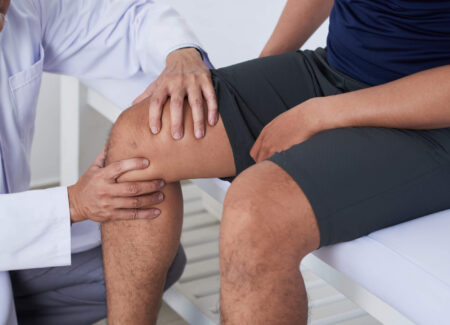
Walking is one of the best ways for individuals of all ages to increase their activity levels and work towards healthy living goals. Walking can help you reach those daily and weekly aerobic activity and exercise goals, and it can help you stay healthy with a wide array of health benefits. Before beginning any type of stretching or exercise routine, you should consult with a qualified healthcare professional or licensed physical therapist.
Take a look at some of the many health benefits of walking, and see why you should commit to getting up and mobile on your feet.
One of the best ways that walking can help you improve your overall wellness is that it can be a great method to gradually build up your endurance and cardiorespiratory fitness with a brisk walking pace or incline. Getting up and active after a recent injury is an important step in the recovery process and is often one of the first things that medical professionals recommend when healing from a significant injury.
Walking regularly can help you increase your heart rate, get the blood moving, and can improve blood flow which helps to deliver important nutrients throughout the body like oxygen, hormones, and stress-relieving endorphins.
Another one of the many benefits of walking is that it is a variable activity, meaning that you can adjust it as needed to fit your exercise and wellness goals. Walking is a low-impact activity that you can gradually build up in intensity and frequency to reach desired activity goals. Over time, you can adjust factors in your walking habits to increase difficulty like the walking speed, frequency, duration, and incline.
Walking can also help you improve your balance and coordination over time. As you work to build your endurance and lower body strength, your ability to remain coordinated while standing and moving around may improve. Improving your balance and coordination is an important step in making sure that you can increase your confidence while performing everyday activities.
The benefits of walking aren’t only physical in nature, there are plenty of benefits for mental wellness as well. Going for a walk and adding it to your routine can be a great way for you to reduce stress and tension that has been steadily building up. Exercise and physical activity have extensive research which demonstrates the link between getting active and reducing stress, which is why adding walking to your routine can be a great way to alleviate stress.
Recent research has demonstrated the value that walking can have on one’s wellness and mental health as well. If you enjoy walking and the great outdoors, walking in your favorite park can have many psychological benefits. Walking can be a great way for you to disconnect from all the things that may cause you underlying stress and give you that breath of fresh air you need.
Another health benefit of walking is that it can help you improve your cognition, sleep, memory, and mood in all ages. As we mentioned earlier, going out for a walk can help you alleviate the stress and tension that is bothering you, and in doing so you can boost your mood and reduce anxiety and depression. Walking regularly can also promote the release of endorphins to help stimulate relaxation and improve one’s mood.
Routinely participating in leisure walking with moderate and vigorous levels of intensity has shown positive signs of improving the mental health for adults. Where you walk can also have an impact on your mood, as researchers found that walking through forest areas helped to decrease a negative mood state more than walking through the city.
Walking is a great exercise for those individuals who are looking to improve their sleep quality and associated benefit like their cognition and memory. There is significant evidence that exercise can help to improve sleep quality which can help you get a better night’s rest and allow your body to recover each night with reduced interruptions.
Walking can also help you boost your creativity. One of the many things that can slow down a creative mind is having many different thoughts and stressors racing through your brain at any given time. Constantly worrying about upcoming work deadlines or things in your personal life can sap your creativity. Going for a walk can give you that breath of fresh air, allow you to clear your mind for a bit, and unlock those creativity juices once again.
Walking and getting physically active as part of your routine can also help you build muscle and strength. Walking acts like WD-40 for the joints to help lubricate them. Some people are fearful of walking because they think it will make their joint pain worse. For most people, walking can actually be protective for the knees. Building strength in your legs can help relieve some of the pressure placed on the joints and may help to alleviate some of the discomfort you experience. In addition, as you work to build strength and muscle, you can build your confidence for performing everyday activities in your normal routine.
Research has also demonstrated the link between regular walks and your energy levels. Research conducted in 2021 highlighted how walking benefited research participants by boosting their mood and energy levels, especially for women and older participants. On days when participants would strive to take more than an average amount of steps per day, they reported higher energy levels and a better mood on the following day.
Walking may also help you improve your immune system. Physical activity combined with proper nutrition can help you boost your immune system and help you stay healthy.
Another benefit of walking is that it can help you maintain a healthy weight. Physical activity can be a great way to stay mobile and help you avoid packing on the pounds. Researchers found that pole walking at a brisk pace roughly four times a week for 60 minutes helped to increase physical activity levels for overweight or obese people, and helped to promote weight loss alongside a proper diet.
Walking regularly can also help you manage health conditions which includes stroke risk, high blood pressure, type 2 diabetes, heart disease, and cancer. Walking is a great way for many individuals to improve their physical activity levels and reduce their risk for cardiovascular disease. In addition, early research suggests that individuals who walk close to 10k steps per day at a high intensity may lower the risk of developing dementia.
There are a multitude of health benefits when you decide to start walking more. As with anything, it’s a great idea to slowly ramp up your activity levels and ease your way into a regular walking cadence as part of your routine. Before beginning any type of exercise or stretching program, you should consult with a qualified healthcare professional.
You might be wondering what the best way to add walking to your routine is, and we’ve highlighted some simple steps you can take to gradually add walking to your routine to begin reaping those health benefits.
One of the biggest barriers many people blame for not making physical activity more of a priority in their personal life is that they say they’re too busy or that they just can’t find the time. Don’t let your busy schedule slow you down. Pull out your calendar, and even if you have to find an open timeslot in the next week or two, commit to adding walking as part of your daily routine on your calendar or schedule. With the advent of work-from-home and standing desks, you can also find all kinds of handy accessories to help you walk while you work with tiny treadmills you can place under the desk.
Another important step to take as you add walking to your routine, is to gradually build up your efforts over time. Start slow and build up your walking tolerance by increasing the frequency of your walks, intensity, and distance. It is typically recommended to increase distance at a rate of 10% per week.
If you prefer walking outdoors instead of staying indoors, make sure you select a route you enjoy. Whether that’s walking through the city so you can see all the hustle and bustle or finding a nice cozy park where you can soak in all that nature has to offer, make sure it’s a route you enjoy. The good news is that you don’t always have to stick with the same route, adding variability to your route of choice can help you keep things fresh and motivate you to get active on those days where you’re not excited by your next walk.
Walking doesn’t have to be boring. There are plenty of ways you can make it more enjoyable. Try to find a walking club where you can find like-minded individuals who are just as passionate about adding walking to their routine for all of the health benefits. Bring your dog along or walk with friends. Try to find ways to make your walks more enjoyable and you’ll find that you feel more motivated to stick to your walking routine.
Another important step you can take to make sure that you can add walking to your routine is to get treated for those aches and pains that could be slowing you down. If you’re not feeling at your best, you might be hesitant to add walking to your routine or make it a priority in your life. Aches and pains don’t need to slow you down, as physical therapy can be an effective treatment option for helping you alleviate pain and get you moving again.
Walking can help you increase your physical activity and help you enjoy a wide array of health benefits. Our licensed physical therapists nationwide can help you alleviate pain, improve function, restore mobility, and get you back to doing everyday activities pain-free.
Request an appointment at a nearby physical therapy clinic to see how physical therapy can help you alleviate pain!

